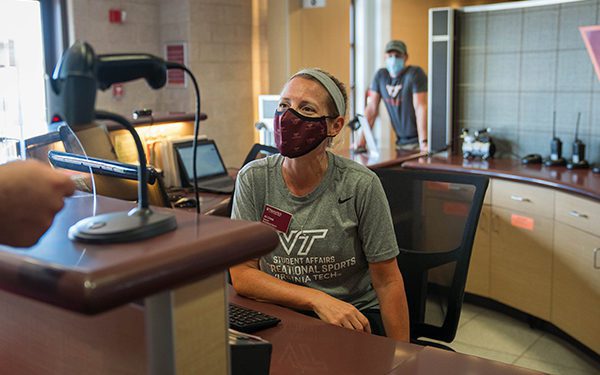Customer service is an important skillset to focus on when training student employees. This skillset goes beyond just the front desk staff or outreach. Every position will engage with a customer at some point in time. However, are we as professionals training our staff to be the most successful? Training students to start thinking of the customer experience and focusing on proactive engagement is vital to cultivating a culture of inclusivity and support in Campus Recreation.
Many people find themselves caught in a routine within businesses due to the experience you had there. I would rather drive 10 minutes out of my way to get coffee from the shop that knows my name or makes me feel welcomed when I arrive. Further, there are plenty of organizations I will avoid due to a negative experience. Almost like taste aversion, people seem to lean toward businesses that provide excellent customer service. However, customer service is part of a larger picture which is the customer experience.
With so much focus on hard skills, I think it is important to focus on soft skills as well where we emphasize how strong proactive engagement can lead to stronger connections with our users. These interactions will, in turn, enhance the overall experience. Preparing students to move past the thought process of addressing issues as they come up and move toward understanding when an issue could arise and how to deal with it effectively. I refer to this as proactive engagement and is why I try to avoid using “customer service” in my training.
Why is Proactive Engagement Important?
Consistency is key when educating members on policy. How many times has a staff member complained when they enforced a policy they were told “I was allowed to do this last week”? Every time you neglect something, no matter how small or big, you are starting a problem. While it is easy to let participants just come in and do their thing, it is important to be consistent. As you see something, your engagement helps users understand the rules and culture better. Additionally, this engagement can help eliminate a problem before it arises. While there are times where you will need to react, you should be prepared and try to act more. Create that first impression, and then keep that positive impression going by being consistent. To do that, you cannot neglect your duties and responsibilities. Be the leader and make a difference.
Plus, cultivating a culture of proactive engagement is important at all levels. Training students to be cognizant of their peers can help create a stronger sense of team. Right away, it is important staff understand the repercussions of their actions and the role it plays with their peers. Being late to a shift, for example, can cause more work for the student supervisor who has to call and find coverage which takes them away from assisting members. It can cause a space to close or a peer to have to change plans unexpectedly so they can cover. By walking students through these processes and humanizing it early, you may be able to eliminate some behavior down the line. Additionally, I love hearing a staff member is bored or does not have anything to do. I always lead with exploratory questions asking them, “What could you do to make the next shift better?” or “What would you have liked to have seen done prior to starting this shift?” Training staff to think about their peers as a team can allow them to take more initiative as they feel more connected to the process.
Is Technology in the Way?
I have been in countless meetings where the question of technology or homework during shifts is the topic. Regardless of where you fall on the spectrum of this topic, I believe if we train staff to be aware and engage, we should be able to conquer the fear of technology or to just be more aware of their surroundings. Implementing a 20:10 policy can be very effective where within 20 feet of someone approaching you the staff is to give some visual acknowledgement of their presence. Within 10 feet the staff member is to verbally greet the individual. Having this policy is a great way to enforce homework or technology as well. If a student cannot enact the 20:10 policy, maybe homework should not be the priority at that time. More importantly, professional staff need to lead by example here. If we are constantly rushing from meetings or buried in our phones as we walk throughout the facility, we are setting the culture that it is OK. We need to set the tone.
Have Practical Training for Customer Service
I love having students do breakout activities during training. With these, I almost always will have sections where staff have to present to the group. This is to help give students practice talking out loud to peers as they will likely have to educate and speak to participants frequently. When teaching proactive engagement, I will ask students to go and speak to participants in the facility by introducing themselves, explaining they are training and ask why the participant likes to use the recreation facility. This gives the students hands on experience talking to participants while they are working out. Most of the time, students will have to enforce policies, procedures or general information by either interrupting a workout or engaging a group of individuals using the facility. Giving students that practice early can help ease some hesitation.
Working with students is great but sometimes it is easy to forget that it took me a long time to be confident to speak to others and find my leadership style. Holding ourselves accountable and creating opportunities for students to grow and develop is the reason many professionals work in our field. Focusing on proactive engagement can be a great tool to help improve peer-to-peer interactions, sense of teamwork, customer service and much more.
Photo courtesy of Virginia Tech.










